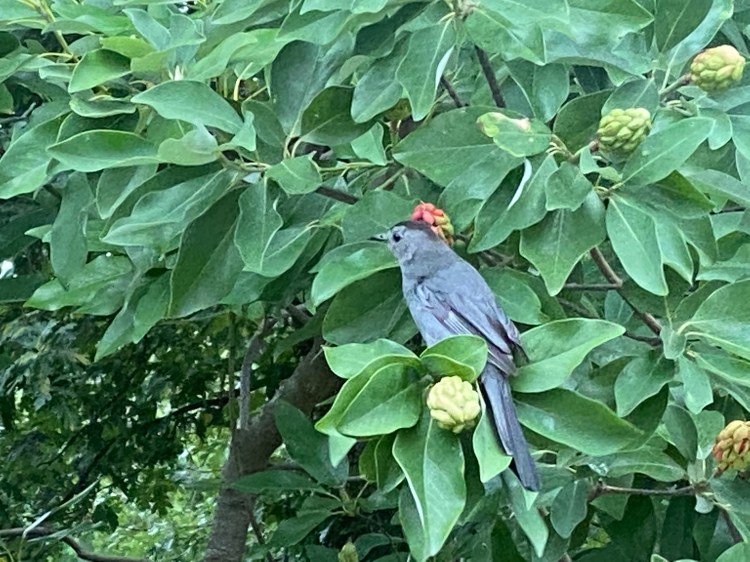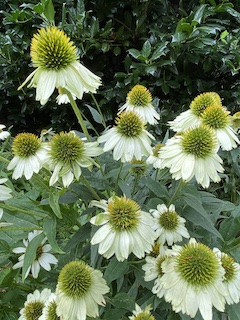When I first began gardening, setting up a few feeders seemed the best strategy for attracting birds to my backyard. Filled mostly with black oil sunflower and nyjer seeds, the feeders quickly became crowded, and the constant chatter of visiting birds brought life to the garden. The feeders were a success, and I felt good about supporting local and migratory bird species.
Several years later, my perspective has changed, not from an epiphany but through paying attention, gradually, to what I have been hearing about gardens as habitat for wildlife. I discovered the ecological gardening literature, began attending lectures on pollinator-plant relationships, and started to experiment with native plants. The logic of the ecosystem took hold. When you understand that beneficial specialist insect species can survive only if they have access to the plants with which they’ve evolved and that birds rely more on the caterpillars sustained by these plants than on seeds to feed their young, it changes your notion of the garden.
From this ecological viewpoint, the intention with which a garden is designed expands to include plant selections that not only look good but also supply birds with food and shelter. Feeders become less critical and more supplementary when plants are feeding the birds. As I chose more caterpillar-supporting and berry- and seed-producing trees, shrubs, and perennials for the garden, and as those plants became established, I decided to take down the feeders to see what would happen.
This feeder experiment was not a scientific study. I did not have baseline data for bird behavior in the old garden, to use as a comparison with bird behavior in the new, feeder-less garden. Nor did I regularly take notes of what I observed. But I did observe, informally, and what I saw became an argument for continuing this approach.

Twenty-five bird species visited my 3,500 square feet of backyard garden over a single year. Tiny ruby-crowned kinglets appeared, flicking their wings as they searched for insects along the branches of the river birch, moving so quickly I could barely keep my binoculars focused. American goldfinches discovered the white echinacea, swaying on bending stalks as they pulled seeds from the flower heads. Ruby-throated hummingbirds buzzed from cardinal flower to cardinal flower, sipping nectar. Catbirds, cardinals, blue jays, and mockingbirds stopped by regularly to check the fruit on the sweetbay magnolia, extracting scarlet seeds as they ripened. House finches foraged on lyreleaf sage, holding on as the thin flower stems curved to the ground.
And one day a pair of brown thrashers took a slow turn around the garden, from one end to the other, flipping over bits of soil and leaf litter and poking around the roots of the perennials and shrubs. Were they drawn by the plants or the insects nurtured by the plants, or did they just happen to be in the neighborhood? I don’t know, but I hope the plants played a role.
All the plants that brought birds to the garden were ones I chose for their value to wildlife and as replacements for less beneficial euonymus, yew, English ivy, crape myrtle, a rose of Sharon, and a lot of bare ground covered in mulch. I also planted a willow oak, knowing that oaks in particular are hosts for hundreds of species of caterpillars. I can’t say I’ve seen the results of this choice yet, with chickadees, for example, flocking to the oak to find caterpillars for their young, but I’m keeping an eye on developments.
The feeders remain in the shed, and I continue to research wildlife-supporting plants to add to the garden. I don’t know how many birds a garden this size typically attracts and whether 25 is more or less than what might be expected, but this number is now a data point to use for assessing the garden’s evolution as a habitat for birds. The feeders may go up again, but for now I’d like to keep the bird-plant interaction experiment going. The future goal? Fifty species might be a stretch, but why not?
For details . . .
See The Birds in My Backyard spreadsheet for a description of what I observed.

Fascinating. I am aware that many beautiful garden flowers have little ecological value, they might as well be plastic. Replacing them with native plants certainly makes sense.
LikeLike
We always promote planting native for this reason. We have to start seeing how all things are connected and how fragile the system is. Keep up the good work.
LikeLike